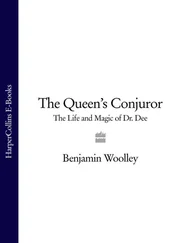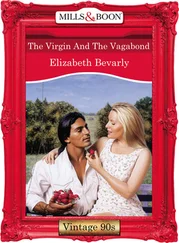By the beginning of October 1607, Newport was ready to sail. Smythe had managed to gather more than one hundred new settlers, including six tailors or cloth workers to look for opportunities for textile manufacturing, two apothecaries to find medicinal ingredients such as herbs, rare earths and animal parts, two goldsmiths and two refiners, to ensure more reliable tests of ore samples. A physician, a surgeon, a tobacco-pipe maker, a perfumer and a white greyhound made up the complement. 17
The two ships sailed from the port of Gravesend, east of London, on 8 October. They stopped off at Plymouth to await favourable winds, and two weeks later set out into the Atlantic. 18
IN THE LIST OF SETTLERS who went to Virginia on the first voyage, William White is described as a ‘labourer’. This did not necessarily mean he was humbly born, as the term was used in passenger lists to identify those brought at another’s expense, such as sons brought by their fathers, or servants brought by their masters. 1
However, nearly all the labourers have one feature in common: very little is known about them. The only trace of biographical information relating to William White is a marginal note by George Percy describing him as a ‘made man’, a phrase used to refer to someone of low social standing who has unexpectedly come into a fortune, an arriviste or parvenu . 2
Percy’s snooty assessment of this social inferior probably arose from White’s decision, soon after Newport’s fleet had first sailed up the James, to jump ship and join the Indians. He was one of several ‘renegades’ who understandably found the prospect of life with the Indians preferable to the dangers and depredations of the English camp. 3
The renegades were rarely mentioned in official records or letters home. Their very existence was not officially recognized until 1612, when a regulation was introduced making it a capital offence to live without permission in the town of ‘any savage weroance’ . 4 The conspiracy of silence arose out of a combination of envy and resentment. When they slipped from the settlement, the renegades entered into the feverish imaginations of those left behind. They became voices from beyond the veil of trees and vines, taunting the settlers for putting up with such hardships, ridiculing English assumptions of cultural and technological superiority, beckoning their former comrades to drop their tools, and wander through the woods into the alluring Indian embrace.
White had somehow fallen into that embrace. He ended up ten miles upstream of Jamestown, at the town of Quiyoughcohannock, visited by the English during their first reconnaissance of the river. It sat on a high bluff overlooking the James (modern Claremont, Virginia). Its name meant ‘priest of the river’, and it served as the religious centre for those living along the banks. This may have been why its people were so curious about the English and their religion, and why they welcomed the nervous, bewildered interloper who had come among them. 5
White would have been placed in the care of one of the senior women of the village, probably Oholasc, the stately queen of the Quiyoughcohannock, the most ‘handsome a savage woman as I have seen’, an English admirer noted. She was raising a son named Tatacoope, whose father was believed to be the mamanatowick Powhatan. Tatacoope was heir to the village chief, Pepiscuminah, or ‘Pipisco’, as the English called him. But Pipisco was in disgrace, having ‘stolen away’ one of Opechancanough’s wives. For this impertinence, he had been exiled to a nearby settlement, ‘with some few people about him’, including the offending woman. As a result, Chaopock, who was Pipisco’s brother from the neighbouring village of Chawopo, had been made acting weroance until Tatacoope came of age. 6
Life for White in the court of this great queen would have been comfortable, at least compared to the conditions being endured at Jamestown. Just being part of a rhythm of daily life was a relief, particularly among such positive people. White noted that before dawn, the men and women, together with children older than ten years, would leave their beds and run down to the river. There they would bathe and wash, and await the sun’s arrival sitting on the bank, within a circle of dried tobacco leaves, such was their delight in the coming of a new day. 7
After these daily ablutions, mothers would set out the breakfast, and summon their youngest boys to come to them with their toy bows and arrows. Only when they had managed to shoot a piece of moss tossed into the air could they tuck into a meal typically comprising boiled beans, fresh fish and corn bread, garnished with venison if the hunting was good. Older boys then went off with their fathers, to learn how to weave weirs and nets to catch fish, or to stalk game and butcher carcasses. 8
And so one day passed into another, until White began to notice this idyll’s fragilities. In recent years, hunting had been bad. For reasons that mystified the Indians, the deer population in the vast woodlands surrounding the river was dwindling. As supply continued to shrink, demand was becoming desperate, if only to fulfil an annual tribute demanded by the mamanatowick Powhatan. Adding to the pressure was concern about a continuing lack of rain. The village store of corn and beans was running low, but the plants in the fields were not yet a foot high, suffering from the second year of a drought more extreme than even the elders could recall. 9
The Quiyoughcohannock weroance Chaopock was also concerned about the amount of loot rival chiefs across the river were extracting from the starving English. The blue beads, copper and glittering minerals being offered in an ever greater multitude were valuable as symbols of chiefly power, and good substitutes for venison as tributes to offer Powhatan. The circumstances that had led to Chaopock’s promotion to chief made him sensitive about matters of status, and going to the English with his begging basket would be demeaning. But, with so many of his fellow weroances proving so greedy for the interlopers’ wares, Chaopock felt he had no choice but to go downriver to see what he could get. He went sometime in the summer, and returned a few days later, showing off a bright red waistcoat presented to him by the English weroance , Wingfield. 10
Then the English were forgotten, as the village became preoccupied with internal matters. White had no idea what was going on, but frantic preparations signalled an important and rare event. The first sign that it was taking place was the appearance of community leaders in heavy make-up. ‘The people were so painted that a painter with his pencil could not have done better,’ White noted. ‘Some of them were black like devils, with horns and loose hair, some of divers colours.’
One day, White awoke to find the town deserted. Probing the surrounding woodland, he discovered the entire community congregating in a clearing, preparing for some grand event. There followed two days of frantic dancing, intensifying the mood of anticipation. The horned satyrs, carrying tree branches in their hands, danced in a quarter-of-a-mile circle around the village fire, one group moving in the opposite direction to the other, both emitting a ‘hellish noise’ when they met. The branches were then thrown to the ground, and the satyrs ‘ran clapping their hands into a tree’, from which they would tear another branch. Anyone who lagged behind was beaten by Chaopock’s personal guard with a ‘bastinado’ or cudgel made of tightly packed reeds. ‘Thus they made themselves scarce able to go or stand.’
On the third day, fourteen strong boys aged ten to fifteen years, painted white from head to foot, were led into the village’s central arena. For the rest of the morning, the adults danced around them, shaking rattles. In the afternoon, women arrived with dry wood, mats, skins and moss. White, with a growing sense of foreboding, noted that they had also brought funerary goods used in the preparation of corpses. The women then began a terrible wailing.
Читать дальше












